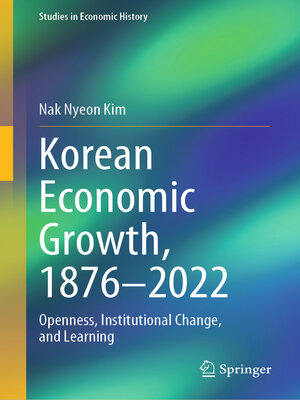Korean Economic Growth, 1876-2022
ebook ∣ Openness, Institutional Change, and Learning · Studies in Economic History
By Nak Nyeon Kim

Sign up to save your library
With an OverDrive account, you can save your favorite libraries for at-a-glance information about availability. Find out more about OverDrive accounts.
Find this title in Libby, the library reading app by OverDrive.



Search for a digital library with this title
Title found at these libraries:
| Library Name | Distance |
|---|---|
| Loading... |
This book provides the first comprehensive explanation of Korea's 150 years of economic growth, from the opening of the ports to the present, based on consistently organized long-term statistics. The book also compares Korea's experience with that of other countries. During this period, Korea experienced major systemic transitions, from a traditional society to colonial rule, and after liberation, the division between North and South Korea. East Asian latecomer nations, including Korea, rapidly closed the gap with advanced countries through learning and adaptation following their opening to the world. The book uses Korea's case to demonstrate how institutional changes influence economic performance and explain the conditions under which rapid catch-up growth can occur or fail to occur. Korea's high growth was achieved under an authoritarian regime with state-led industrial policies. As the limitations of this model became evident, Korea transitioned to a private-sector-led approach, facing economic crises in the process. Economic growth led to the rise of a highly educated middle class. This, in turn, surfaced demands that had been suppressed under the authoritarian regime, paving the way for democratization. Social development and fairness, long overshadowed by economic growth, became key policy agendas. Following the 1997 Asian financial crisis, Korea has faced the dual challenges of slow growth and rising inequality, driving increased calls for income redistribution and the establishment of a Korean-style welfare state. The book is divided into two parts. Part 1 explores long-term trends in Korea's economic growth, comparing them with other countries. Part 2 provides a detailed, stage-by-stage analysis, highlighting the specific institutional and policy changes that shaped Korea's development.







